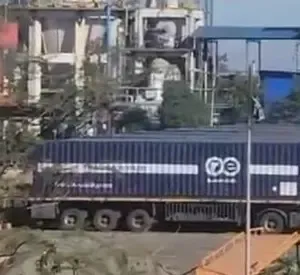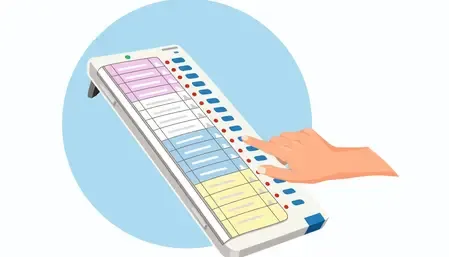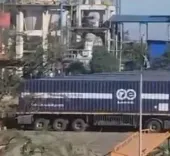Has the Maha Cabinet Approved the Slum Cluster Redevelopment Scheme for Mumbai Ahead of BMC Elections?

Synopsis
Key Takeaways
- Maharashtra Cabinet approves Slum Cluster Redevelopment Scheme.
- Aims for a slum-free Mumbai.
- Implementation by Brihanmumbai Slum Rehabilitation Authority.
- Targets large private and government lands.
- Public amenities to be integrated into redevelopment plans.
Mumbai, Oct 7 (NationPress) The Maharashtra Cabinet, under the leadership of Chief Minister Devendra Fadnavis, has announced the endorsement of the Slum Cluster Redevelopment Scheme, just in time for the approaching Brihanmumbai Municipal Corporation (BMC) elections. This initiative, facilitated by the Brihanmumbai Slum Rehabilitation Authority, is aimed at eliminating slums from significant private, government, and semi-government lands throughout the Mumbai region.
This strategic move is part of the government’s ambition to achieve a slum-free Mumbai.
“Mumbai is home to numerous slums, along with aging, unsafe buildings, construction sites, and vacant lands unsuitable for development. The cluster redevelopment scheme is designed to ensure these areas are redeveloped in a cohesive and sustainable manner, improving urban planning and enhancing civic amenities. This initiative aims to elevate the living standards of the city's residents. As per this scheme, the Slum Rehabilitation Authority will serve as the primary agency responsible for the Slum Cluster Redevelopment Scheme,” states the government release.
The Slum Rehabilitation Authority will pinpoint a land cluster with a minimum contiguous area of 50 acres, which must comprise over 51 percent slum territory.
The land cluster identified by the Chief Executive Officer of the Slum Rehabilitation Authority, Greater Mumbai, will require approval from a high-level committee chaired by the Additional Chief Secretary of Housing and subsequently, from the government.
The redevelopment initiative should be assigned to a government agency for execution via a joint venture (JV) or a private developer appointed through a tender process. If a developer possesses over 40 percent of the total area involved in the group redevelopment plan, the decision to proceed with the developer will be made with prior governmental consent, based on the high-level committee's recommendations.
“Should any land owned by the Central Government or its undertakings agree to participate, it will be included in the Slum Cluster Redevelopment Scheme,” the government release states.
“For buildings in the Slum Cluster Redevelopment Scheme that qualify for development under different provisions than Regulation 33(10) of the Development Control and Promotion Rules, 2034 (such as 33(7), 33(5), 33(9)), if included in the cluster redevelopment, they will receive the benefit under 33(10) or the greater benefit available under relevant provisions,” the government release further explains.
Private landowners will receive a developed plot with an equivalent floor area index, valued similarly to the Town Planning Scheme (TPS), at approximately 50 percent of the land's total value, contingent on prior approval from the High Level Committee for inclusion in the proposed slum cluster redevelopment scheme.
If private landowners decline this offer, the land will be acquired in accordance with the Land Acquisition, Rehabilitation and Resettlement (LARR ACT), 2013. The financial responsibility for land acquisition will rest with the promoter/developer executing the project.
“Slums located in areas impacted by the Coastal Regulation Zone (CRZ) - One and Two will also be integrated into the Slum Cluster Redevelopment Scheme, with rehabilitation measures applied to these slums,” the government release confirms.
Public amenities will be constructed on land vacated by the rehabilitation of huts in Zone-1, while developers will also have the opportunity to establish retail units on land vacated in Zone-2.
In the context of the Slum Cluster Redevelopment Scheme, if feasible, construction exceeding the rehabilitation requirements may be approved, allowing construction beyond the limit of 4 floor space index (FSI).
However, such construction should only be utilized for the clearance of slums unsuitable for development outside the Cluster Redevelopment Scheme or for the rehabilitation of Project Affected Persons (PAP). Incentives under Regulation 33(10) of the Development Control Rules, 2034, will be granted for such construction,” the government release concludes.










